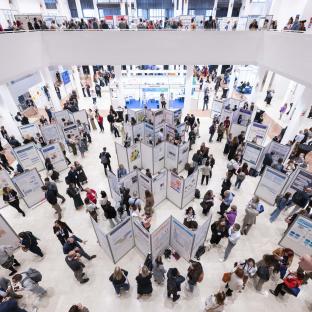Bologna, 8 October 2025 – Today was the third and final day of the 35th Alzheimer Europe Conference (#35AEC) “Connecting Science and Communities: The future of dementia care” which began on Monday 6 October. Today’s programme focused on less common types of dementia and on next steps in dementia diagnosis and treatment.
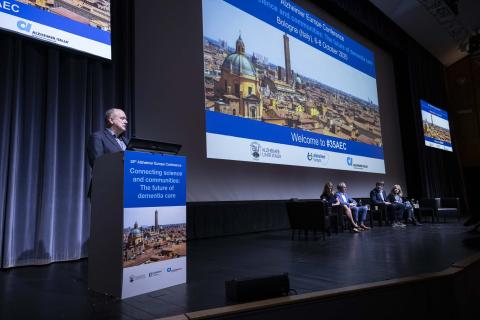
Not all dementias are Alzheimer’s disease
The fourth plenary of the conference looked at some of the less common types of dementia (i.e. not Alzheimer’s dementia). Yolande Pijnenburg (Netherlands) was first up to the lectern, with a talk about “Improving the diagnosis and treatment of fronto-temporal dementia”.
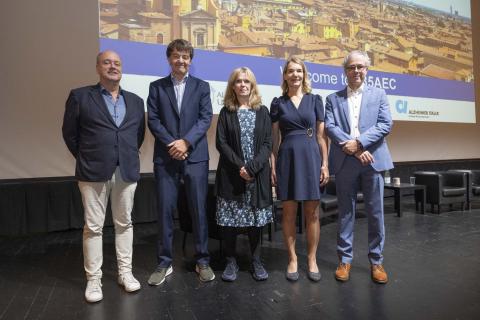
She began by sharing some statistics around frontotemporal dementia (FTD), noting that it is the second cause of young-onset dementia and is still relatively under-diagnosed, probably due to both the young age of presentation, the atypical (non-memory) presentation, and the lack of disease specific biomarkers.
Progress in the diagnosis of FTD has been made in the field of measuring social cognition, the use of serum or cerebrospinal fluid (CSF) neurofilament, and the development of disease-specific plasma biomarkers, she said.
Moreover, she pointed out that in-depth phenotypical profiling would help to recognise the clinical picture at an earlier stage, highlighting that, at the moment, multiple therapies are being tested in controlled trials, particularly for the genetic forms of FTD, which form around 20% of the total population which has FTD. In conclusion, she stressed that genetic testing in suspected FTD offers both diagnostic and therapeutic potential.
Up next was Rejko Krueger (Luxembourg), to discuss genetic risk factors, in particular in relation to Lewy Body Dementia, Parkinson’s disease, but also Alzheimer’s disease (AD). He started by drawing the audience’s attention to the fact that, although Alzheimer’s disease is the most common form of neurodegenerative dementia, there are also significant numbers of dementia cases that are in fact caused by synucleinopathies such as dementia with Lewy bodies (DLB) or Parkinson’s disease dementia (PDD).
“The majority of people with dementia are sporadic and supposed to be based on an interplay between genetic and environmental factors. However, monogenic forms with specific mutations in genes like amyloid precursor protein (APP) for AD or alpha-synuclein (SNCA) for DLB and PDD have allowed us to identify causes of the neurodegenerative process and are instructing us about the underlying mechanisms”, he stated.
He discussed proteins encoded by mutant APP or SNCA, Abeta and aSyn respectively, which he said not only pathologically aggregate in brains of these rare familial forms, but are pathognomonic for all cases with the respective disease. “Therefore, Abeta and aggregated forms of aSyn were established as biomarkers for these types of dementia”, he continued. He also noted that, for the common sporadic forms of dementia, genetic risk factors were identified such as ApoE or GBA1 for AD, DLB and PDD that substantially contribute to Abeta and aSyn pathology, respectively.
In closing, he said there is increasing evidence for genetic factors contributing to dementia risk, paving the way for improved biomarkers and promising disease-modifying treatments.
The third speaker in this plenary session was Piero Parchi (Italy), whose talk was titled “Are prion diseases the forgotten dementias? An update on their prevalence and diagnosis”. He started with some words of explanation about prion diseases: These are rare neurodegenerative disorders related to prion protein (PrP) misfolding. They are characterised by extensive phenotypic heterogeneity, and, in most cases, by rapid progression and spreading. They include sporadic (or idiopathic), genetic and acquired forms.
The most common human prion disease is Creutzfeldt-Jakob disease (CJD). Besides CJD, human prion diseases include other phenotypes (e.g., Gerstmann-Sträussler-Scheinker disease and variably protease-sensitive prionopathy) in which misfolded PrP mainly forms aggregates of C-terminally truncated, unglycosylated and anchorless fragments, resulting in a much slower disease progression, increased formation of amyloid plaques, including cerebral amyloid angiopathy in some cases, and reduced transmissibility.
In the clinical setting, the early identification of patients with suspected CJD is often challenging, he said, because CJD patients may present with isolated symptoms that remain the only clinical manifestation for some time, or with atypical neurological syndromes. He therefore noted that it is likely that some patients with prion disease will remain unrecognized, without the performance of a neuropathological examination.
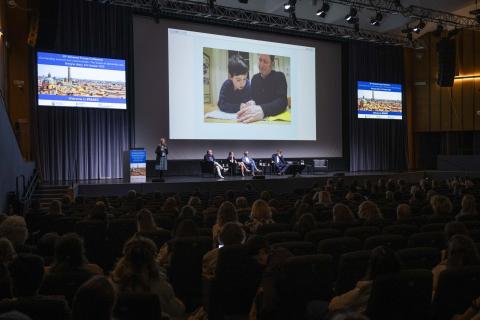
The final speaker for this morning plenary session was Claire Fyvie (United Kingdom - Scotland). The main message of her presentation was that children can get dementia too.
“Most stakeholders and policymakers think of dementia as a disease of old age, but childhood dementia is real, under-recognised and devastating”, she said and noted that there are more than 100 genetic conditions that cause childhood dementia. “They are all terminal. There are no cures. Half of the children with dementia die by the age of 10. Most die before reaching their 18th birthday”, she said.
She spoke from the heart and from personal experience, about the effect of dementia on her fourteen-year-old son Alexander, calling on Alzheimer Europe, its members and their governments, to include children in their dementia frameworks, policies, research strategies, and events.
After the plenary ended, there was a coffee break during which delegates were able to view poster presentations, exhibited in the Ex-GAM Foyer (floors 1 and 2), and to speak to poster presenters about their research.
Parallel sessions and special symposia
Eleven parallel sessions followed, including two that were in Italian language, organised by our conference co-hosts Federazione Alzheimer Italia and Alzheimer Uniti Italia, respectively. One of the parallel sessions was called “Gender and sexuality in dementia”. Other sessions explored “Psychosocial interventions” (a series of Quick Oral Presentations), “Treatment & Medical management”, “Campaigning for change”, “Hospital Care”, “Apathy, agitation & aggression” (session moderated by Paddy Crosbie (Ireland), a member of the European Dementia Carers Working Group - EDCWG), and “Fronto-temporal dementia”. There was also an INTERDEM session called “Design & Dementia Research within the HOMEDEM Network” and a session on “Nature as Medicine: Supporting people with dementia through the environment”, organised by EMEIS.
After a short break, four special symposia took place simultaneously. One of these was on “Prioritising Alzheimer’s Disease in Europe: Next steps for Policy Action”, and was sponsored by Biogen, while another, organised by the Fondation Médéric Alzheimer looked at “Non-pharmacological interventions and Frontotemporal Lobar Degeneration (FTD) and Lewy Body Disease (LBD)”. Yet another was titled “TEF-Health e le infrastrutture europee di intelligenza artificiale a supporto dell’innovazione e della ricerca sull'Alzheimer” and was organised by Evaristo Cisbani and Ilaria Campioni, Istituto Superiore di Sanità, TEF-Health Italian node. The fourth was a session called “Dementia Researchers of the future” and was supported by the Alzheimer Europe Foundation, the INTERDEM Academy and Frontiers in Dementia.
Following a lunch break, a final eleven parallel sessions were held, including the last two on the agenda from our Italian co-hosts. Topics of the remaining parallel sessions included “Care workforce”, “Carers of people with dementia” (a series of Quick Oral Presentations, moderated by Trevor Salomon (United Kingdom), Chair of the EDCWG), “Biomarkers in dementia” (at which one of the speakers was Sarah Campill, Public Involvement Officer, Alzheimer Europe), “Research funding”, “End of life care”, “Art interventions”, and “Intellectual disability & Down syndrome”. There were also two sponsored sessions, one organised by AI-MIND to mark the end of the project, and one by the SIGNATURE project, called “The role of socio-affective assessment in dementia”.
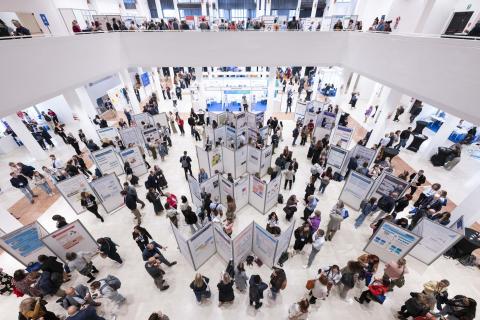
After these parallel sessions, delegates had a final opportunity to view poster presentations.
“Dementia Researchers of the future” symposium highlights the work of nine early stage researchers who won bursaries to attend and present
The symposium “Dementia researchers of the future” was chaired by Iva Holmerová (Czechia), Fania Dassen (Netherlands) and Valentina Barrera (Switzerland). This special symposium was supported by the Alzheimer Europe Foundation, the INTERDEM Academy and Frontiers in Dementia.
This session afforded a great opportunity for nine early stage researchers, selected by our jury, to benefit from bursaries to attend and present at the conference. The selection of the bursaries was based on the best average scores each received from the jury members.
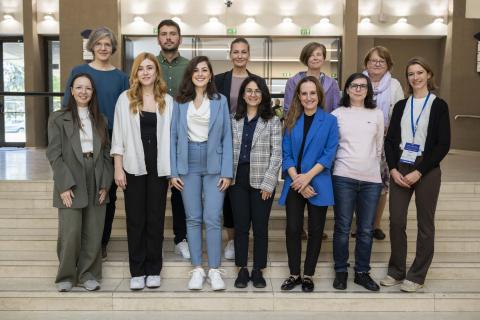
The nine presentations were:
• Examining the Key Correlates of Functional Impairment in Behavioural Variant Frontotemporal Dementia: Cognitive, Behavioral, Personality, and Brain Perfusion Contributions, by Electra Chatzidimitriou (Greece)
• Integrating Mild Behavioral Impairment into Dementia Prevention Strategies: A Telemedicine-Based Approach Aligned with WHO’s Global Action Plan, by Efthalia Angelopoulou (Greece)
• Longitudinal Trajectories of Sleep Disturbances and Cognitive Decline in Mild Cognitive Impairment: Evidence from a Three-Phase Study, by Areti Batzikosta (Greece)
• Evaluating the Effectiveness of a Theory Driven Person-Centred Disaster Preparedness Program for Family Caregivers of People Living with Dementia, by Özlem Çiçek Doğan (Türkiye)
• Art therapy and Alzheimer’s disease in Greece: Who influence(d)(s) whom? by Vaitsa Giannouli (Greece)
• Genetic predisposition for different aspects of dementia pathology and cognitive decline in a community elderly population, by Stefanos N. Sampatakakis (Greece)
• Diet quality modifies the risk of dementia conferred by AD pathology in older adults: a 15-year population-based study, by Anja Mrhar (Slovenia)
• Application of Positive Psychology Interventions in individuals with early-stage cognitive decline related to dementia: their impact on cognitive and brain functioning, by Dimitra Vasileiou (Greece)
• The well-being and lived care experiences of family caregivers of people living with dementia: the case study of Photovoice practice in Lithuania, by Ieva Petkutė (Lithuania).
At the end of the symposium, an award of EUR 2,500 by Frontiers in Dementia for the best quick oral presentation was presented to Efthalia Angelopoulou.
What next in dementia diagnosis and treatment?
At 15.45, the second keynote lecture of the conference was delivered by Marco Trabucchi (Italy), whose talk explored some of the next steps in dementia diagnosis and treatment. He began by stressing the importance of approaching the future of dementia care with optimism. “Patients do not need pessimism”, he emphasised, but rather they need “a strong, generous engagement by researchers, doctors and psychosocial operators to improve the quality of their life, overcoming enormous amounts of interfering events.”
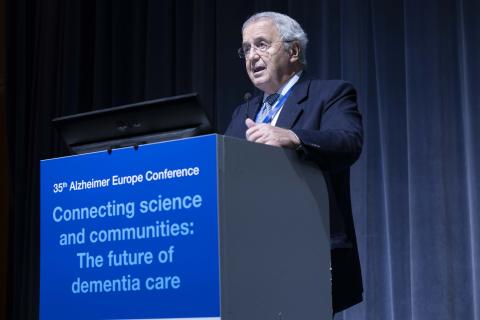
People affected by dementia and their families are waiting anxiously and are holding out hope for any possible new approach to their clinical, psychological and social needs, he said. Indeed, he continued “they are paying great attention to the rate of progress in the various fields and are not willing to forgive any kind of delay due to inadequate focus on goals connected with a positive outcome for diagnostic procedures and therapeutic approaches.”
It is therefore vital that research must consider that the progress in dementia “cannot be built on isolated pillars” and that scientific breakthroughs “must be translated into meaningful care”, he insisted. He also noted that communities should be strengthened through greater knowledge and support, while policies need to ensure access and fairness. And guiding all of this, he said, must be the lived experience of people affected by dementia.
In closing, he said “connecting science, medicine and communities is not just a theme, but a commitment to integration, collaboration and humanity.”
Arrivederci, Bologna…and dia duit, Dublin!
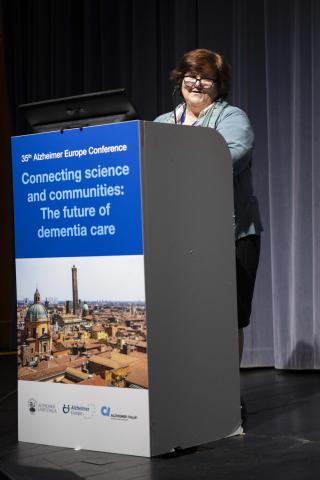
The closing ceremony of the conference included comments from Maria do Rosário Zincke dos Reis, in her capacity as our Chairperson. She took the opportunity to thank all of the delegates and speakers, as well as reiterating thanks to all of our corporate sponsors, including Gold sponsor Lilly, Silver sponsor Bristol Myers Squibb, and Bronze sponsors, BioArctic, Biogen, Eisai, Johnson & Johnson, MSD, Novo Nordisk, Roche and UCB. Finally, she said a huge thanks to the Alzheimer Europe team and the new Conference Coordinator Isabelle Collot for all the hard work in making the conference happen and to our co-hosts Alzheimer Uniti Italia and Federazione Alzheimer Italia.
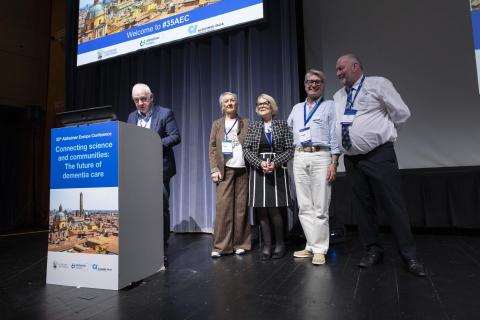
Andy Heffernan, Chief Executive of the Alzheimer Society of Ireland (ASI), then took to the stage to invite delegates to the 36th Alzheimer Europe Conference, “Sláinte: Building momentum in dementia through policy, research and partnership”, taking place in Dublin, Ireland, from 27-29 October 2026. Save the dates and keep your eyes peeled for our joint press release with our colleague at The ASI, tomorrow morning at 10.00 CET (9.00 Irish time).
To conclude the conference, attendees at the closing ceremony were treated to an uplifting and deeply moving performance by Ologramma Argento, a choral group composed of older adults (over 65) with a strong focus on inclusion, memory, and community engagement, based in the Emilia-Romagna region. The performance brought the audience to tears and earned a standing ovation.
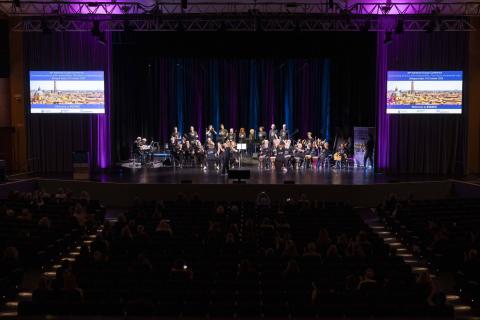
Alzheimer Europe would like to thank to all delegates who joined us at #35AEC, and we hope to see you next year for #36AEC in Dublin!
Acknowledgement
Alzheimer Europe gratefully acknowledges the support of all conference sponsors, with particular thanks to Gold sponsor Lilly, Silver sponsor Bristol Myers Squibb, and Bronze sponsors, BioArctic, Biogen, Eisai, Johnson & Johnson, MSD, Novo Nordisk, Roche and UCB.
For further information, contact:
Jean Georges, Executive Director, Alzheimer Europe, 5, Heienhaff, L-1736 Luxembourg, Tel.: +352-29 79 70, Fax: +352-29 79 72, jean.georges@alzheimer-europe.org, www.alzheimer-europe.org ¨
Notes to editors:
Alzheimer Europe is the umbrella organisation of national Alzheimer associations and currently has 41 member organisations in 36 European countries. https://www.alzheimer-europe.org/
The Alzheimer Europe Foundation: Alzheimer Europe set up the Alzheimer Europe Foundation with the aims of supporting networking activities of national Alzheimer’s associations in the framework of Alzheimer Europe, encouraging the involvement of people with dementia in European conferences, meetings and projects, promoting European dialogue on legal and ethical issues in dementia, and supporting the exchange of information and good practices on national dementia strategies and Alzheimer’s plans. https://www.alzheimer-europe.org/about-us/alzheimer-europe-foundation&n…;
The European Working Group of People with Dementia (EWGPWD) was launched by Alzheimer Europe in 2012. It is composed entirely of people with dementia, nominated by their national Alzheimer associations. They work to ensure that the activities of Alzheimer Europe reflect the priorities and views of people with dementia. The group operates independently and the Chairperson is also an ex-officio member on the Board of Alzheimer Europe with full voting rights. (/www.alzheimer-europe.org/Alzheimer-Europe/Who-we-are/European-Working-G…)
The European Dementia Carers Working Group (EDCWG) was launched by Alzheimer Europe and its member associations in 2022. It is composed of current carers, relatives and supporters of people with dementia or carers with prior experience of caring in the 5 years prior to their nomination by their national Alzheimer associations. They work to ensure that the activities, projects and meetings of Alzheimer Europe duly reflect the priorities and views of people caring for a person with dementia. The group operates independently and the Chairperson is also an ex-officio member on the Board of Alzheimer Europe with full voting rights. (https://www.alzheimer-europe.org/about-us/european-dementia-carers-work…)
INTERDEM is a pan-European network of researchers collaborating in research on and dissemination of Early, Timely and Quality Psychosocial Interventions in Dementia aimed at improving the quality of life of people with dementia and their supporters, across Europe (http://interdem.org/).
TEF Health (Testing and Experimentation Facility for Health AI and Robotics) https://tefhealth.eu/home
AI-Mind project https://www.ai-mind.eu/
